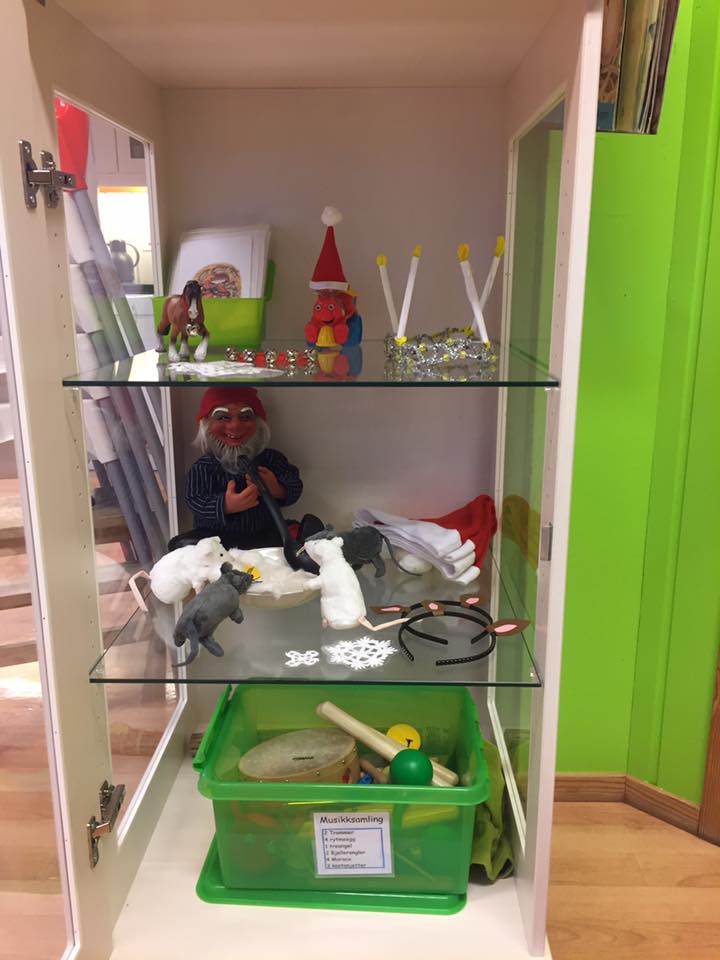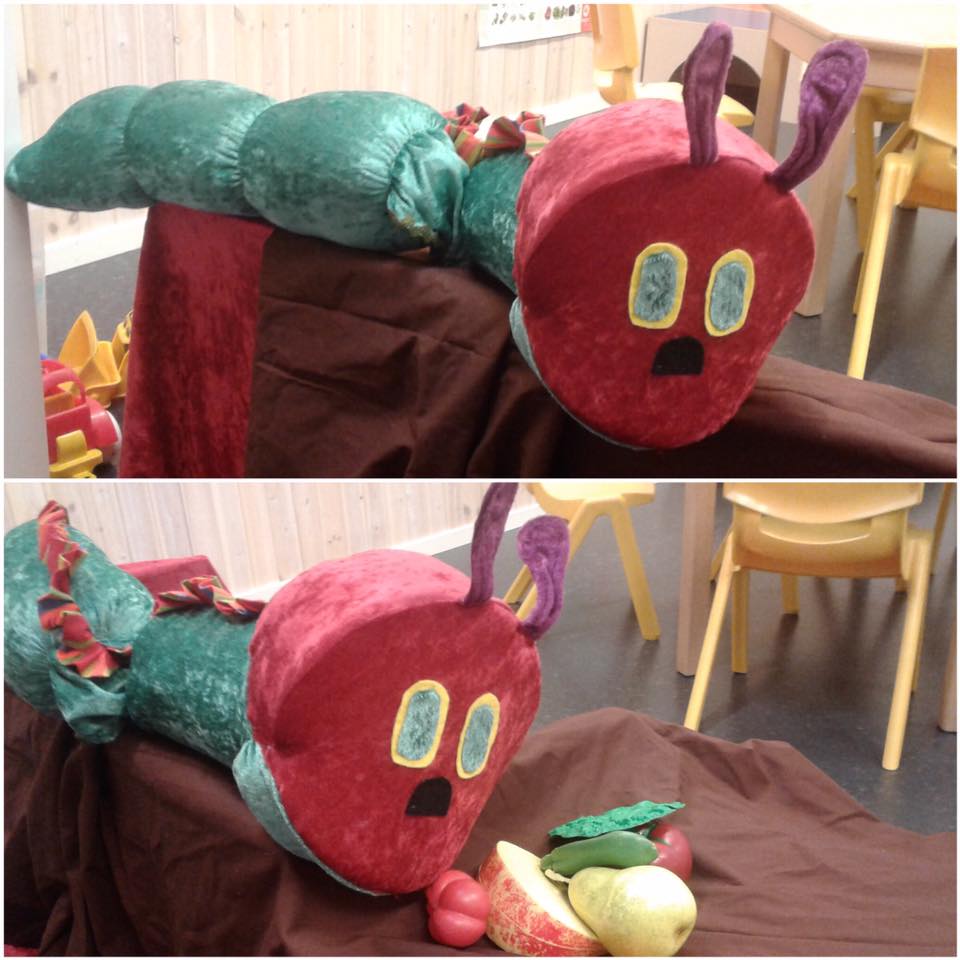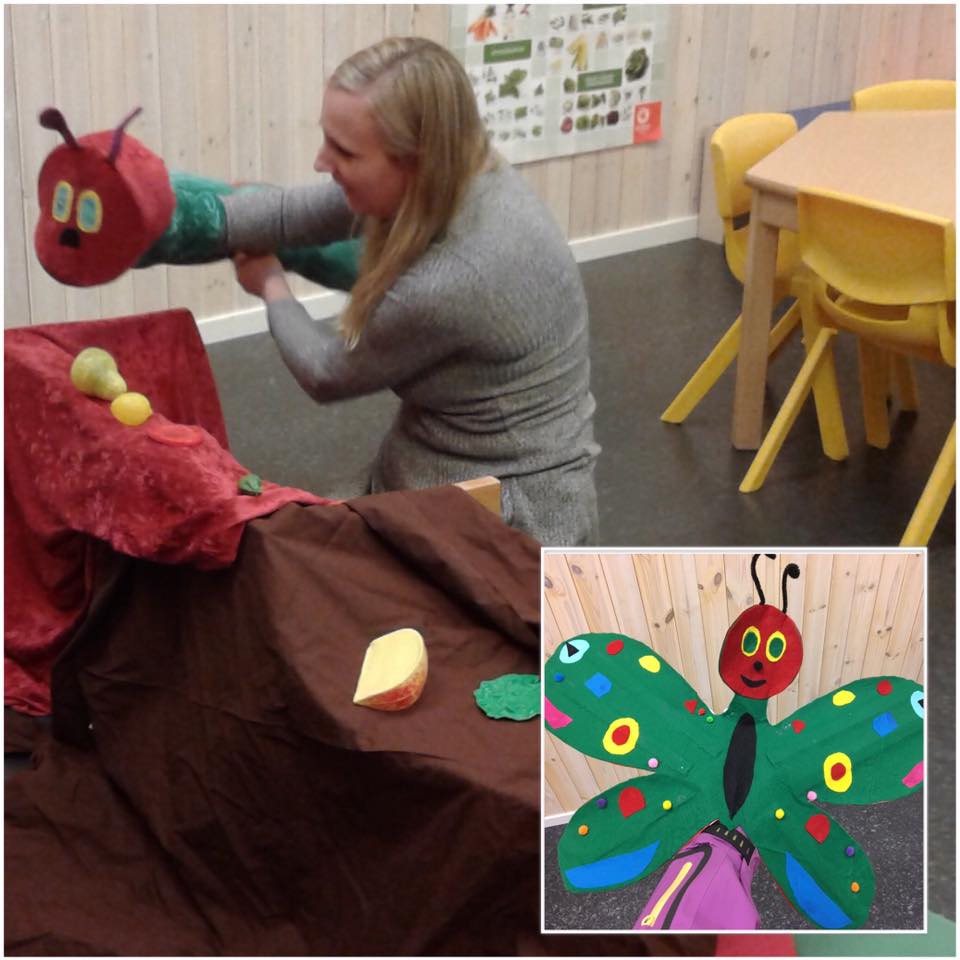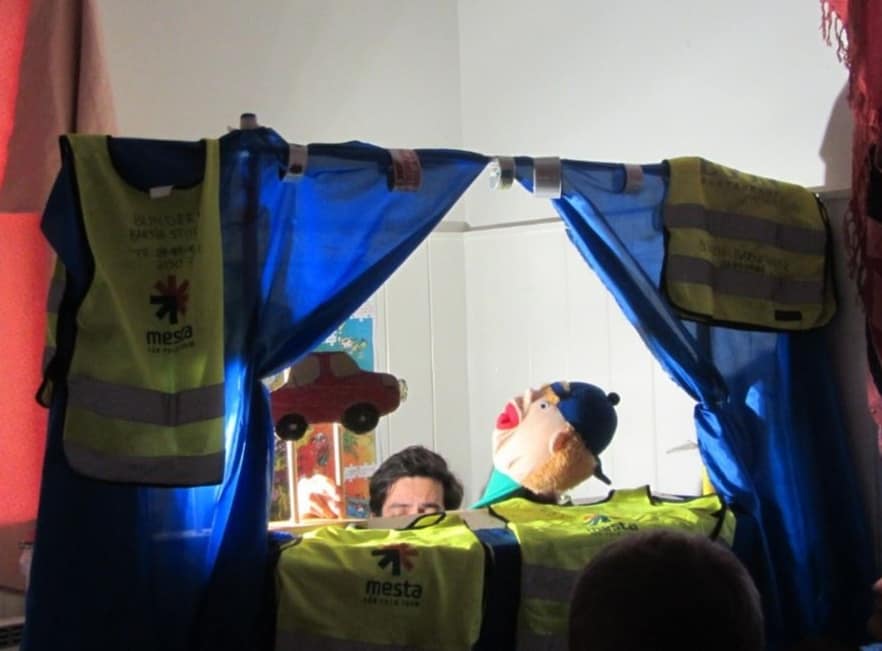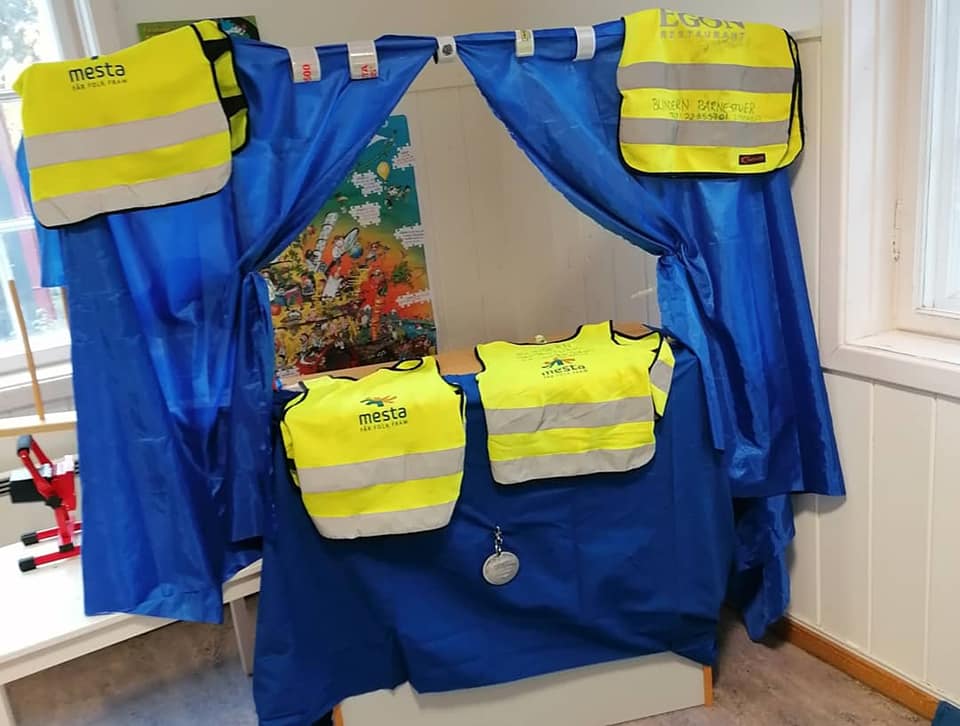- THE GATHERING HOURS ARE ABOUT SEEING EACH OTHER






It requires that we gather around something, and that adults have a genuine presence that rubs off on the children. When we are present with all our senses, real magic is created.
Text: Magnhild Freuchen
- When I went to kindergarten myself, assembly times were one of the most boring things I knew about. In a circle we had to sit quietly on hard chairs and listen to endless books about chocolate factories and Winnie the Pooh. The adult's voice was like gray rain in his head. I would much rather kiss my very first boyfriend, Pål Emil, says Kristine Helene Støvring with a laugh in her voice. She works as a support teacher at Familiens Hus Grünerløkka in Oslo.
With empathy in her voice, she tells about the time the lights were switched off: The department had put on their adventurer's hat, and the mystery and silence were palpable. The children sat and half lay on the floor. The adult spoke in a low, whispering voice.
- In her hands she held a stick with long, colorful strips of tissue paper attached to it. The strips of paper waved like seaweed, and we children understood that now we had all traveled together under the sea. Now anything could happen!
- For me, the gathering time is about seeing each other, and being together about something. To share a focus, so you build common valuable references, says Kristine.
Then, 20 years after her own experiences in the nursery school, it was suddenly her turn to hold a meeting. Kristine describes children who hung from straps in the dressing room, and who hid behind their raincoats. No one noticed that she was trying to tell or sing.
– As a newly qualified kindergarten teacher, this was experienced as the defeat of the ages. I was supposed to come here and have wonderful moments together. Just as neat and decorative as in the didactic plans we had learned to make at the University College, she says honestly.
- Suddenly I realized that the nursery had a huge djembe drum lying around. Veronica Sherborne writes that all children have two basic needs: They need to feel at home in their own body, and thus achieve mastery of their body, and they need to be able to create contact with others.
Soon, Kristine got the children to help wake up the tom, because it was lying snoring and sleeping inside its sleeping bag. Together they studied the patterns and drawings on the cover, and concluded that it was made in Africa. After much shouting and coaxing, the drum eventually woke up.
- One by one the children were allowed to come over and sit on it with me and drum. And then I made heavy crocodile punches: Boom! Boom Boom Boom! Five little monkeys jumped in a tree…they teased the crocodile….you can't catch us heeeeeer!
- The dance game was on, and those who wanted to be mischievous monkeys jumped along. Another adult had to be a crocodile, but the monkeys slipped away easily.
Shared experiences
Because when we get together, we have to get together about something. And this something can be experienced with the body, the mind and the senses, so that we see, participate and remember, Kristine points out. Gathering around something in common gives us an experience of one "we". That we are together, we are here and we are a group of friends.
- A moment of gathering can be singing in loud voices, rolling like a shrimp over the seabed, trying to give each other a massage in the form of hatching "eggs" on the head and crawling ants on the back. Holding a gathering time is traveling together, and often has a beginning, a middle and an end. Along the way, the adult must hold several glances at the same time, accept words and facial expressions, says Kristine, and adds:
– You need intense presence, so intense that you occasionally forget that the meal should have started, that an employee should have gone on a break and a meeting should have started.
20 years later, she was to bring the adventure from the sea and the rustle of tissue paper to the children in the ward. They had worked with the ocean as a theme and had visited everything from spider crabs, hammerhead sharks and prawns. Now it was the scallop's turn, and many of the children had never heard of the word scallop, or seen one.
- So then I brought a live large scallop, straight from the fish shop at Aker Brygge. It didn't turn out quite as I had planned, because it took at least 20 minutes to pry open the closed shell with a dull fish knife.
- The children cheered and shouted, and I was completely sweaty! Finally I got the scolding. We carefully inspected the heart, gills and liver, and something else murky and exciting without a name.
Kristine says that they later turned off the light, and she found swaying seaweed made of tissue paper. Together they swam far under the sea: Down there, the flower girl Linnea from Stjerneskogen had swam, actually through a mirror. But the sea was full of clattering scallops, and it was impossible for Linnea to get hold of another pearl.
– Clap, clap smack! Said the paper shell I had made for the occasion, with a glued pearl inside. Were there any brave children here who really dared to get hold of the pearl?
- For the rest of the week, we drew and cut scallop shells, and the children laughed every time an adult wasn't fast enough with his hand. Smack, smack, smack!
Strange noises
Another time there was a spontaneous meeting late in the afternoon when Kristine thought she heard noises from the socket. She lay down on all fours and put her ear close. Of course it was the Mouse King himself who lived in there! And he complained about not enough cheese!
- For the rest of the afternoon, we put pieces of cheese neatly around the socket and hung up decorations so it would be cosy. The parents eventually came and stood in the doorway while we lay on our stomachs and listened to the socket.
- I think it must be nice for parents to get a glimpse into the magical day-to-day life of a kindergarten. Seeing for yourself what the children can be engrossed in, observing the interaction with an employee, and the common attention they share, says Kristine.
The children were also tasked with counting how many sockets they had in their house, laying out cheese and finding out how many mice actually lived there.
- Hopefully there were some conversations about mice in walls, different types of cheese and maybe about what a socket is made for.
Movement and play
Attentive presence, curiosity and the joy of being together about something are, according to Kristine, important factors in holding a gathering time. She still thinks you can think through a few points before planning: Which place is suitable? Is the room bright and inviting, or is it cramped and full of clutter and toys? What time of day can you gather? Does it always have to be right before a meal? Perhaps you can gather on a staircase, in the kitchen or under a tree?
– Think about movement and play! Adults who show joy in movement are fun! What if you ask the children if they can be a table, a tree or a peeing dog with one leg in the air? Or even better, if you show it yourself first. Singing and movement can be a good way to include children who do not have a large vocabulary yet, or children who have extra challenges in everyday life.
Another thing you can do, Kristine advises, is to bring something nice or strange that you see on the way to the nursery in the morning. A flowering branch, a shiny beetle, a lovely white and smooth stone or a huge light bulb you found at home in the pine cone. Let the children hold, feel, smell and see. The object can be a starting point for questions and conversation.
- Spin on the children's thoughts and fables together! Sometimes you actually have to write down what you say, so you can remember it for later or explain and show it to parents. Later, the drawings can be used for educational documentation, inspiration and for reflection within the staff group, says Kristine.
And if you are extra brave, she has a challenge for you:
- Have a gathering time at a parents' meeting. Stand in a circle and stand on one leg as you sway like silent sea grass under the sea. Afterwards, everyone can lower their shoulders a bit and talk about the theme of the gathering time. Perhaps the parents can tell about what they remember from their own kindergarten days, and what they played, says Kristine.
